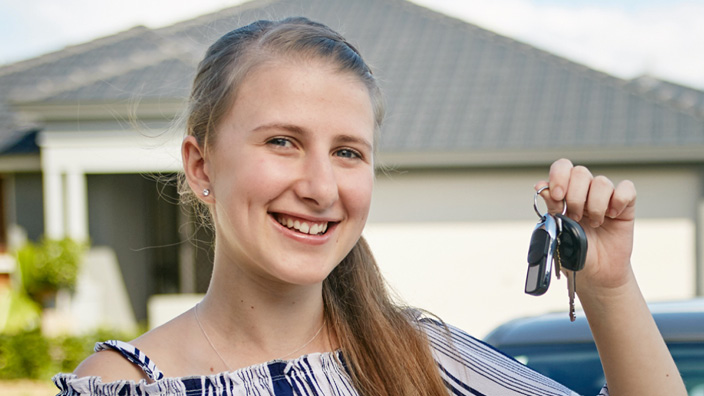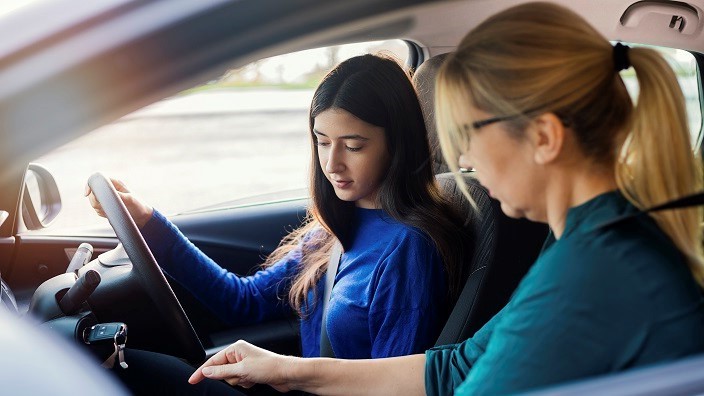 Buying your first car means freedom and independence, right?
Buying your first car means freedom and independence, right?
Well sure, but there’s a bit more you need to consider before taking the plunge.
The biggest expense is likely to be buying the car itself. You’ll need the money up front or at least a deposit and the wherewithal to qualify for a loan, which you’ll need to repay over an agreed timeframe. See our tips on budgeting to help you plan for these kinds of expenses .
When Should I Start Saving For A Car?
This is like asking "how long is a piece of string" 😂
But, the best time to start saving for a car is when you decide it's something you'd like to buy. It's never too early or too late - the important thing is to start saving.
Most of the time, people usually start saving before or after the get their learner licence around 16.
This is also usually the time when you'll be thinking about starting your first job, which is great, as you'll have more income for saving.
Sometimes it's other changes in your life that may make you start thinking about your first car, like leaving school, getting around to sport or other activities.
How Much Should You Be Spending on a First Car

Did you know that one third of Australians are financially illiterate?
If you know you'll be happy with a used car, these usually cost less than new cars, but can still be worth tens of thousands of dollars.
If a new car is in your sights, you can expect to pay more, but this comes with the benefits of newer technology and safety features.
As a rule, follow these steps to plot your path to buying your first car:
- Think about the type of car you want, and find out how much you will need to buy one
- Examine your budget and determine how much you can regularly commit to saving
- Use a savings goal calculator to see how long it will take you to reach your goal and get behind the wheel.
Setting a Budget and Creating a Savings Plan
Setting a budget
Firstly, you'll need to set a budget for yourself. A budget is simple - it's a way for you track how much money you earn versus how much you spend.
Making changes to the amounts you earn and spend can mean you have more money to spend or save. Here's how to set one:
- Select a time period - monthly or yearly is common.
- Work out how much you will earn in your time period based off your current earnings.
- Make a list of all your expenses (the things you buy) in the given time period.
- Subtract your expenses amount from your earnings amount to see how much money you can currently save.
- If you want to save more, just look for some expenses you could do without, and remove them from your budget to see what impact it makes.
- Use our handy budgeting tool here to get started.
Creating a savings plan
Once you've got your budget set up, you can create a savings plan. As savings plan is a way for you to work out how long it will take to reach your savings goal - in this case, buying a car.
Here's how to create your savings plan:
- From your budget, grab the amount of money you'll be able to save each month.
- Take the estimated price of your savings goal, like a car.
- Divide the price of the car by the amount you can save each month.
- Divide this figure by 12 to see how many years it will take you to reach your goal
For example, imagine you could commit to saving $250 per month, and you wanted to buy a car that costs $15,000.
15,000 ÷ 250 = 60 - it will take you 60 months to reach your goal.
60 months is equal to 5 years (60 ÷ 12 = 5)
Use our handy savings goal calculator to get started.
New Car Purchase Considerations
If you’re buying a car from a dealer, there may be dealer delivery fee on top of everything else.
New cars come with a warranty, but they’re of varying time periods or distances.
You’ll also need to know what you’re getting for your money and whether the price is negotiable.
You’ll also have to pay a one-off transfer fee when you first buy a car, which is calculated as a percentage of the total cost.
Used Car Purchase Considerations
Used cars may be cheaper, but make sure you know the history of the vehicle before you buy.
It’s a good idea to have an inspection done so you know what you’re getting into. That’s where the expenses start.
Budgeting for Expenses
Cars must be registered, which includes Compulsory Third Party Insurance (CTP), or what’s known as a green slip, both of which must be renewed and paid for annually.
Generally, the bigger and more expensive the car, the more it is to register and insure, so keep that in mind when calculating your car budget.
It’s also a good idea to get comprehensive insurance for your vehicle, because CTP only protects other people, not you or any vehicles or property in the case of an accident or if your car is stolen.
Other ongoing expenses you need to keep in mind include servicing, to ensure your car remains in good working order, as well as tyres, and of course, fuel.
There’s a lot to consider, but once you understand the true cost of owning and running a car, and you’ve sort out your finances, you’re ready to go shopping!



